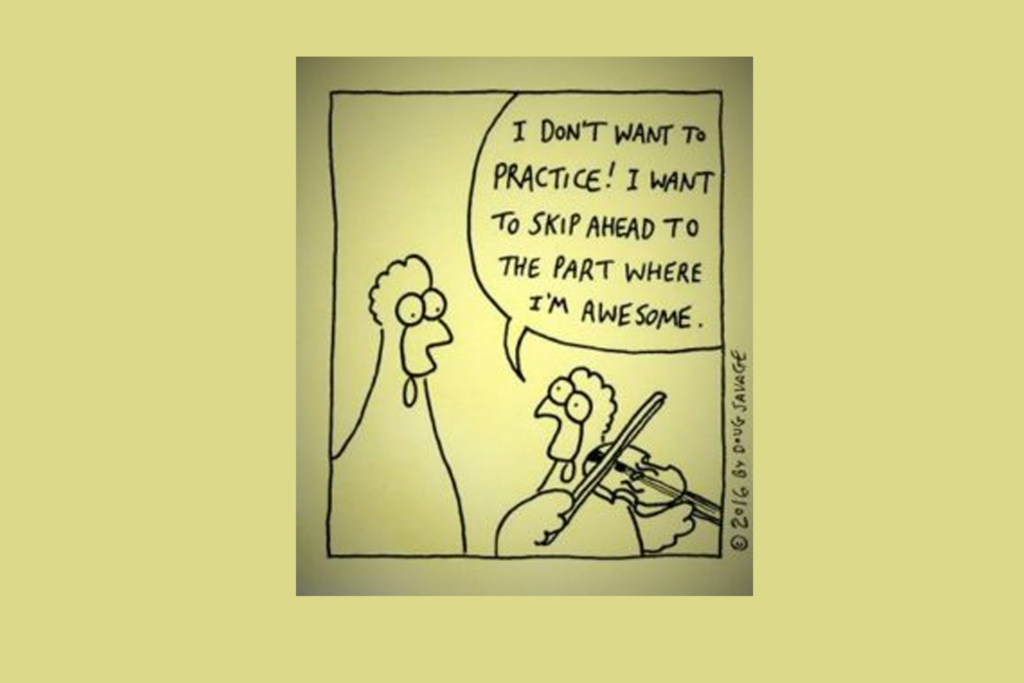The secret: blow fast air through a small aperture to make high-frequencies.
Or, expressed as a formula: Fast air + small hole = high notes. I’m quite sure this is a physics thing…
Can’t string players also alter pitch by tightening or loosening the tension on the string? Sure, they do this all the time during tuning, and yes, they can produce higher frequencies by applying more tension. But what happens to that length of string when too much tension is applied…? Catastrophic failure! Snapped strings!
(By the way, I know of no guitar model or method designed to allow a musician to play higher and lower notes using this “tension” method.)
Some players achieve higher pitches by stretching or thinning their lips (the “smiling” technique), and this would be like how a guitar tunes into pitch by adjusting tension on the same length of string. For brass players, using this technique to play higher is ineffective and dangerous. There’s a real risk we’ll either damage or break the “string”!
If you stretch a muscle out, it causes more strain to apply the required force. For example, pick up a chair, and lift it over your head. Then, stretch your arms out perpendicular to your body, and repeat, trying to lift the same chair to the same height. Not as easy, is it? What’s different? How you’re using your muscle.
* If you blow pure air, how do you make a larger or smaller aperture through which air passes?
* What does all this look like in the mirror?
Spend more time playing your instrument outside rehearsals. You will improve. How long did it take for you to learn “walking”? Or “driving a car”? It takes time. There are no shortcuts. You need the horn on your face more.


